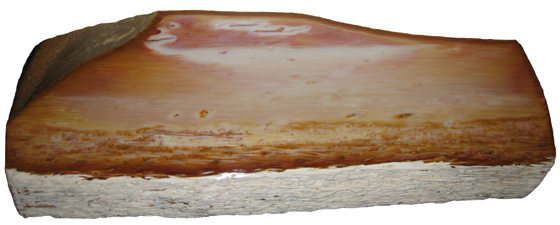
 |
 |
Oligocene Epoch: 33.9-23 Million Years Ago
Louisiana
Palmoxylon of the Catahoula Formation 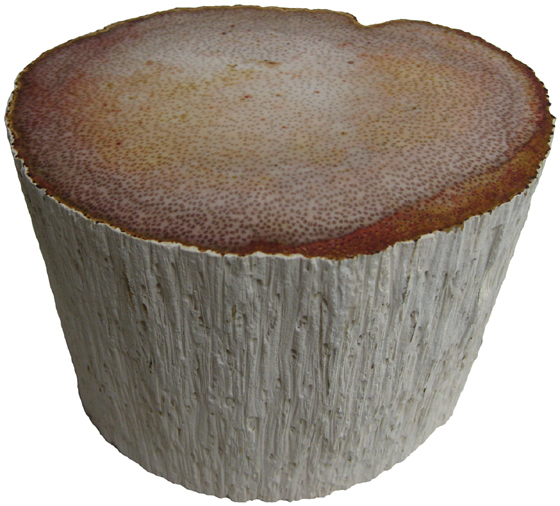 |
The genus name Palmoxylon is derived from the Latin word for palm tree, palm, and the Greek word for wood, xylo (Borror, 1988, p. 69 & 111). Palm trees actually do not produce wood; although, they do produce fibrous, wood-like stems. The woody cylinder stems of angiosperm dicots and gymnosperms, such as sequoias, spruce and pines, are produced from secondary growth that adds girth to the stem and consists primarily of secondary xylem made of cellulose and lignin. In fact, wood is often defined as secondary xylem (Raven, Evert & Curtis, 1981, p. 664). Palm tree trunks result from only primary growth and reach their adult diameter near ground level. Palm tree trunks consist of individual vascular bundles embedded in a groundmass of living parenchyma cells. In cross-section the vascular bundles can give a spotted appearance to the palm fiber. |
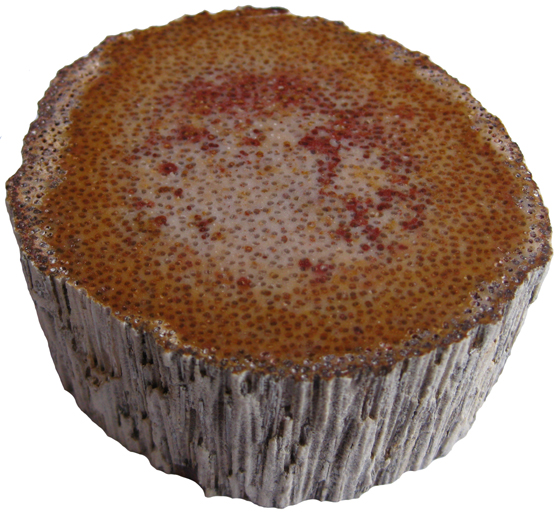 |
|
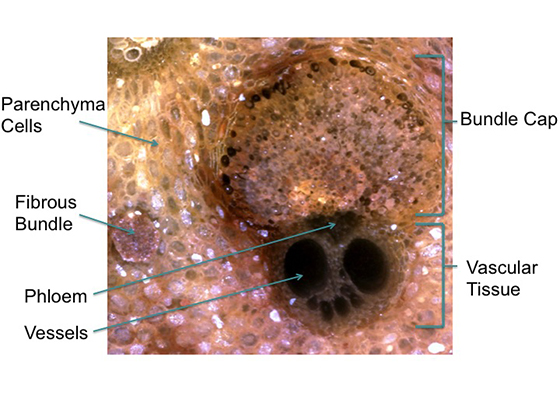 |
| In the center of the stem vascular bundles are spaced far apart. Towards the periphery of the stem the vascular bundles become more numerous and crowded. Longitudinal cuts reveal that the vascular bundles form rod-like structures. |
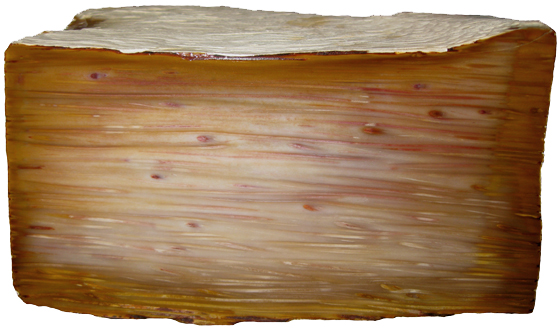 |
Satisfactory palm specimens can be rare. Full rounds are unusual with most specimens representing fragments of trunks. Palm trunks are made from primary growth and much of the stem is composed of living parenchyma cells. The parenchyma tissue is not as resistant to decay as the wood of gymnosperms and dicot angiosperms. Thus, good preservation of intact palm trunks is less likely. The lack of good preservation combined with the generic appearance of the palm fiber explains why there is less scientific systematic work on palms versus gymnosperms and angiosperm dicots. |
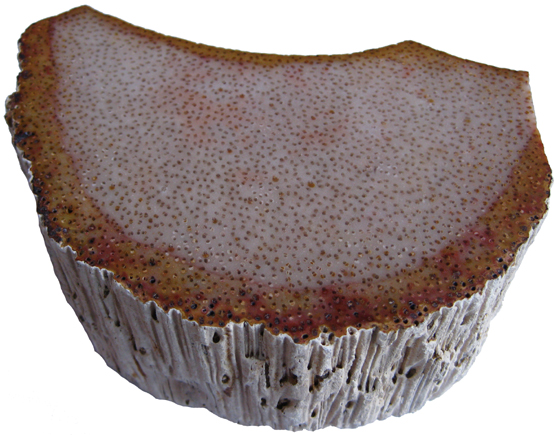 |
Still, to the keen observer differences in vascular bundle structure and ground tissue can be observed between specimens. Some species have fibrous bundles that appear as small roundish bundles composed of sclerenchyma cells or fibers (Tidwell, 1998, p. 248). Fibrous bundles are made of the same cells that make up bundle caps. |
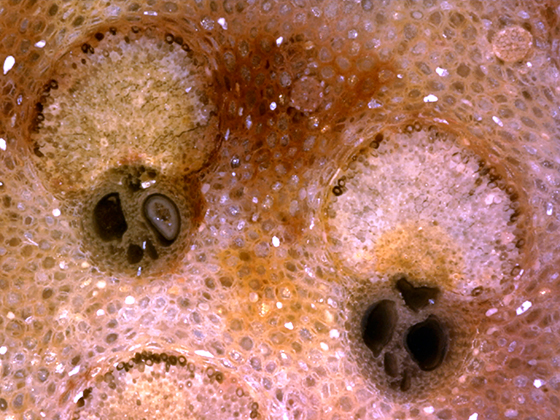 |
Palmoxylon is the most abundant plant fossil from the Catahoula Formation and often exhibits excellent preservation. In the past many weathered specimens could be found on the surface or reworked in more recent deposits. Berry, in his 1916 paper, describes 7 Palmoxylon species from the Catahoula Formation, providing a key to their identification (p. 234). Differences in vascular bundles and ground tissue are used to key out the species. The species described include: P. ovatum, P. mississippense, P. texense, P. lacunosum, P. cellulosum, P. remotum and P. microxylon. Plates are included that provide illustrations showing cross-sections. Louisiana Palmoxylon may be unmatched worldwide for its fine preservation and color. The permineralization with silica is so fine that cell structure is faithfully preserved. When tapped, specimens produce a sound not unlike fine china. The red, yellow, white and lavender colors invite our imaginations to dream of ancient sunrises and sunsets. |
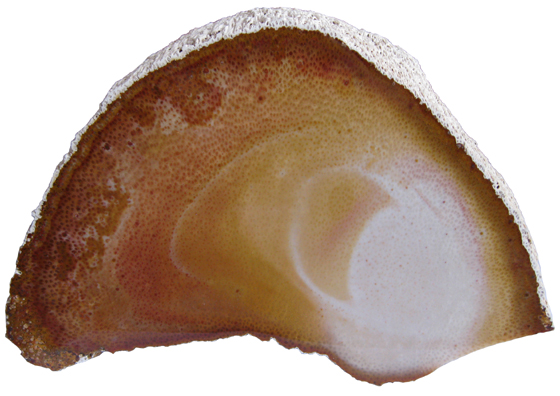 |
To borrow a phrase from Mary White, the finest of Louisiana Palmoxylon specimens are truly semi-precious gemstones that serve as keys to the geologic past. Click on the image below to enter our Oligocene Louisiana Gallery. Click on Palmoxylon of the Catahoula Formation for a printable version of our article (Revised January 2015). |
|
Bibliography |
Borror, D.J. (1988). Dictionary of Word Roots and Combining Forms. California: Mayfield Publishing Company. Daniels, F.J. and Dayvault, R.D. (2006). Ancient Forests: A Closer Look at Fossil Wood. Western Colorado Publishing Company: Canada. John, C.J. (2001). Louisiana Geofacts: Land: Public Information Series No. 6. Louisiana Geological Survey: Louisiana State University. Kenrick P. and Davis, P. (2004). Fossil Plants. Smithsonian Books: Washington. Matson G.C. (1916). The Catahoula Sandstone. U.S. Geological Survey Professional Paper 98M: 209-226. Paine W.R. and Meyerhoff A.A. (1968). Catahoula Formation of Western Louisiana and Thin-Section Criteria for Fluviatile Depositional Environment. Journal of Sedimentary Research, vol 38, pp 92-113. Raven, P.H., Evert, R.F., & Curtis, H. (1981). Biology of Plants [3rd Ed]. New York: Worth Publishers, Inc. Stewart W.N. and Rothwell G.W. (1993). Paleobotany and the Evolution of Plants [2nd edition]. Cambridge University Press: Cambridge. Tidwell, W.D. (1998). Common Fossil Plants of Western North America. [2nd Ed]. Washington: Smithsonian Institution Press. White, M.E. (1991). Time in Our Hands: Semi-Precious Gemstones: Keys to the Geologic Past. Reed Books Pty Ltd: Sydney, Australia. |
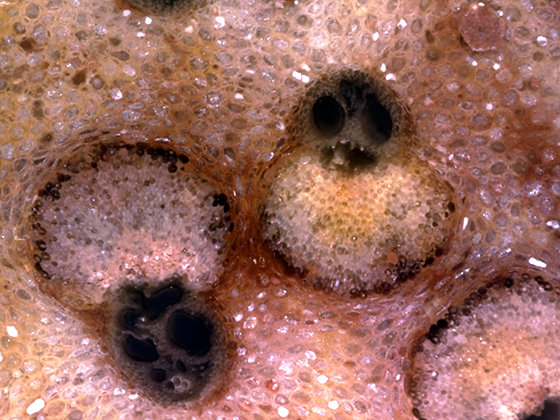 |
|
|











